Morocco. The challenge of culture.
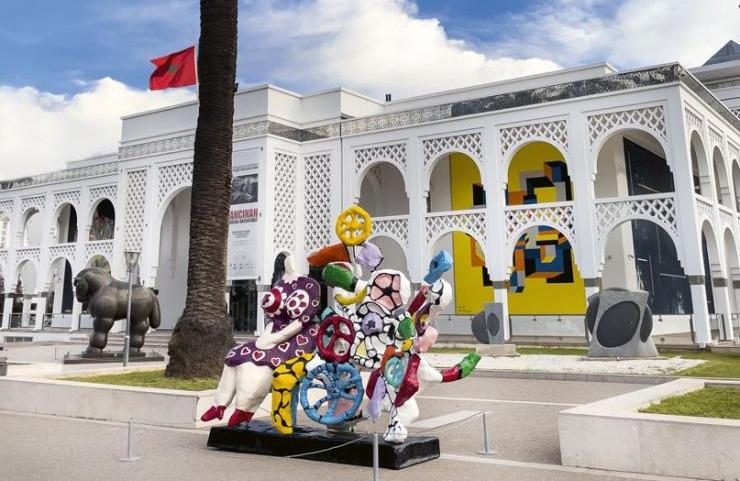
Over the last ten years, fourteen museums have been opened. A cultural strategy that aims at rediscovering its rich cultural,
traditional and artistic heritage.
Rabat is not part of the tourist circuit of a country with incredible geographical variety and richness. The quiet capital of the Kingdom of Morocco is far from the chaos of Casablanca, the frenzy of Marrakesh, the perennial international atmosphere of Tangier, or the ancient charm of Fez, with its impressive medina. However, something began to move at the beginning of the century when the country witnessed the succession of the monarchy and presumed changes in the way of governing, after the death of Hassan II, which did little to transform a regime that controlled everything.With the coming to power of Mohammed VI, in addition to investments in infrastructure in the north of the country – an area traditionally vindictive and far from the blind obedience of the rest of the country – Morocco seemed to rediscover its rich cultural, traditional and artistic heritage.
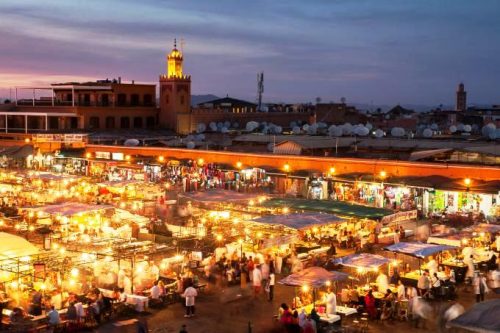
Jamaa el Fna in Marrakesh. The Jamaa el-Fna Museum helps to explain the richness of public space, a square, in which both the culinary aspects of the country’s culture and entertainment and theatre converge. 123rf
At the top of Rabat’s Mohamed V Avenue, at the main entrance of the capital’s Royal Palace – there is one in every major city in the country – construction began on what was inaugurated in 2014 as the Museum of Contemporary Art Mohamed VI. Three years earlier, as its director Mohamed El Idrissi recalls, the Alawite monarch appointed the artist Mehdi Qotbi – acclaimed for his work related to Arabic calligraphy and his collaboration with writers such as Léopold Sédar Senghor, Octavio Paz or Aimé-Césaire, among others – president of the National Museum Foundation. El Idrissi defines it “an independent and autonomous structure, responsible for managing museums in Morocco”.
The director continues: “We started by working on a diagnosis that allowed us to get an idea of the buildings that needed specific interventions to transform them into museums and prepare them to host works that require particular conditions; of the collections which had to be redistributed throughout the national territory to make each museum as lively as possible; and the plans that focused on the public, on the people we wanted to come to visit us, generating a cultural mediation and programming that did not exist until today”. The intense work on these three central areas has made it possible to boast, ten years later, a circuit of 14 museums inaugurated and two under construction, located in Tangier, Tetouan, Meknes, Rabat, Marrakesh, Safi and Agadir.
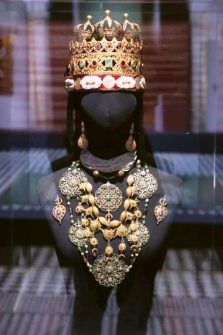
One of the 3,500 pieces of Amazigh jewellery exhibited at the Oudayas Museum. Photo: National Museum Foundation
The reign of Hassan II was indisputably associated with the great mosque of Casablanca – whose 200-meter-high minaret made it the tallest Islamic temple in the world in 1993, second only to those in Mecca and Medina, and whose financing was partly paid for by the “voluntary” contribution of each citizen in the years of its construction – and his successor Mohammed VI, chose to use culture to improve the country’s image.
In this attempt by African countries to leave behind the strongholds of the colonial era – Morocco remained a French protectorate until 1956 and a Spanish protectorate until 1958 – the Maghreb country has implemented a deliberately decentralized cultural strategy in the last decade, with a theme as varied as its culture itself.”The museums we started with dated back to the colonial era, they were fossilized in time and presented a rigid display, invariable in time and space, which did not adapt to our regional specificity. Furthermore, in that period, Morocco was starting to develop a regional strategy that we had to accompany from a cultural point of view. Looking at the map of our museums, we realized that they were not representative of the reality of our heritage. There were cities where there was not a single museum”, says El Idrissi, adding “We needed to do the work of adapting the contents to the region of origin and creating museums
where they did not exist”.
The pedagogical dimension is one of the innovations that can be noted in some of the new proposals. “We want them to become attractive spaces for young people and schools; we are working on a more active programme. In addition to the permanent exhibitions, we also needed temporary ones. And we wanted to make sure we could receive exhibitions from abroad, to modernize our spaces.”
In a single day
Today in Rabat it is possible, in just one day, to visit the halls of the Mohammed VI Museum of Modern and Contemporary Art – where, in addition to Moroccan artists, works by Picasso, Goya, Giacometti or the Impressionists have been exhibited, contemplate jewels dating back to 150,000 years ago – found in 2021 in a cave near Essaouira – in the Chellah Museum, or the caftans (traditional costumes) at the Oudayas Museum, finishing with an immersion in the artistic works of the new generation of Moroccan photographers at the carefully maintained Museum of Photography for which the Fort of Rottenburg (dating back to 1869), located on the Atlantic, was restored.
This space was inaugurated shortly before the pandemic with an exhibition of 20 photographers selected by Younes Alaoui Ismaili, a Moroccan documentary photographer.
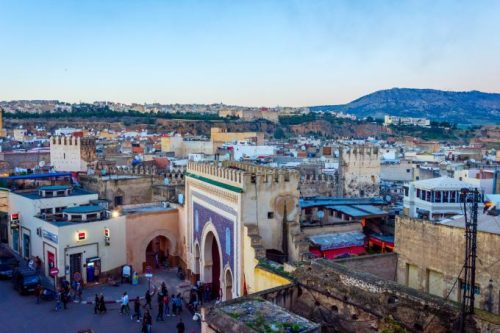
Fez city medina old town. The museum collects the Jewish tradition of the city of Fez. 123rf
Director El Idrissi explains the particularities of each restored space: “In Tangiers, it is important to create a place to exhibit the history of the country’s painting, as well as to invite foreign exhibitions or convey the fact that it is the diplomatic capital of the Kingdom. As in Tetouan, we exploit the ethnographic heritage, the Andalusian character and the local heritage to talk about an art that has developed over the years.
The National Museum Foundation has set up three museums in Marrakesh to encourage reflection on material (fabrics and artifacts) and intangible items (due to the confluence of cultures) of its heritage. The Jamaa el-Fna Museum helps to explain the richness of a public space, a square, in which both the culinary aspects of the country’s culture and entertainment and theatre converge, declared a World Heritage Site by UNESCO in 2001 for hosting a vibrant concentration of popular cultures through music, religion and oral artistic expressions.
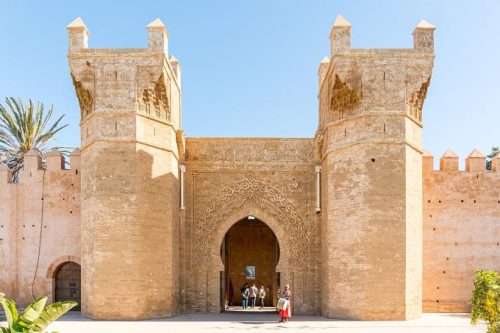
The main gate of Chellah. in the Chellah Museum there are jewellery exhibited j dating back to 150,000 years ago. CC BY-SA 4.0/ Fernando Pascullo
El Idrissi continues his story with the restoration of the spaces dedicated to music in Meknès, to the cultural heritage of Agadir – on which work is still in progress – and to the museum that collects the Jewish tradition of the city of Fez: “There are 16 museums, but we have also staged 20 major exhibitions at the Mohammed VI Museum of Modern and Contemporary Art, starting in 2014 with a major exhibition on medieval Morocco, then moving on to Giacometti, Picasso from the Pompidou collection, the Bank of Spain collection from Goya to the present day, to the impressionists and, currently, one on Arab modernity from the collection of the Institut du Monde Arabe in Paris, together with an exhibition dedicated to Beninese art.”
On opening days, entry is free and the museums overall register an average of 10,000 visitors per day, and in the three months in which they hosted the Rabat Biennial (before the pandemic), 150,000 people passed through the halls of the Mohamed VI Museum. “When you offer something of quality, the public responds and comes, it shows interest and is eager to learn and live new cultural experiences,” he concludes.
Carla Fibla García-Sala



